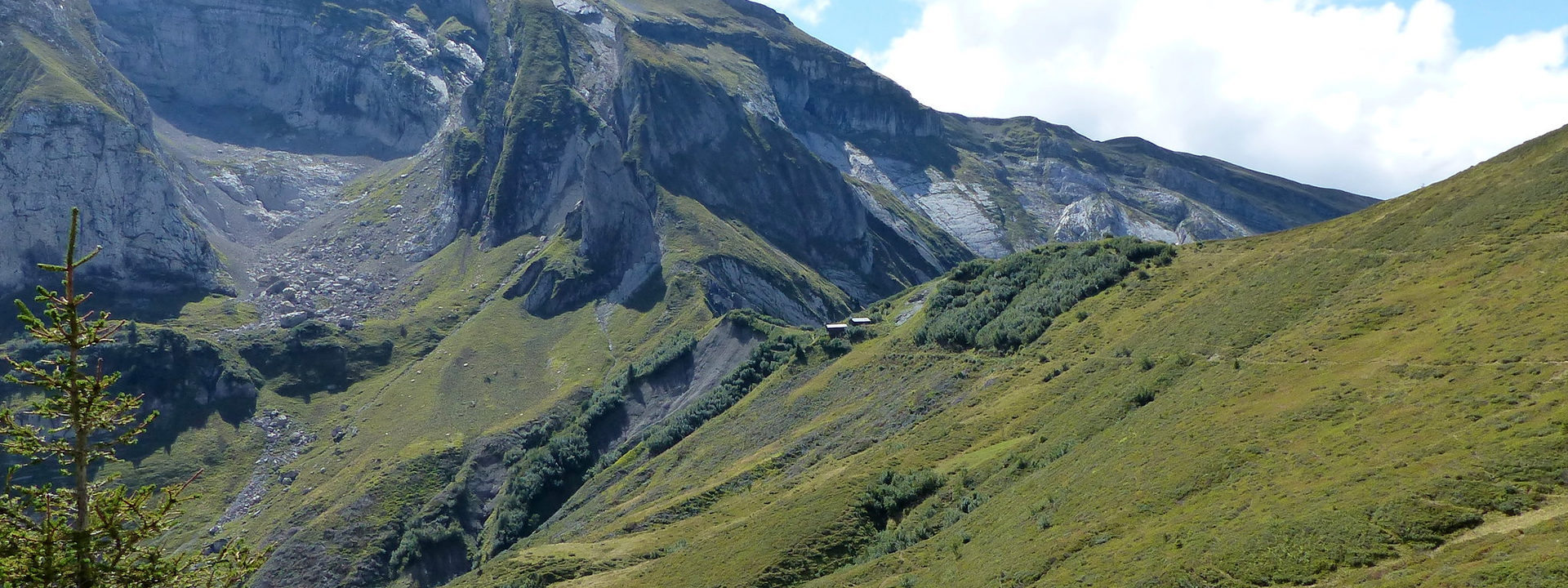Just a stone’s throw from the Col de Cou, the famous pass connecting Switzerland and France, the Col de Bretolet is a nature reserve dedicated to the protection and study of migrating species.
Geography
The Col de Bretolet is about 1 km from the Col de Cou (1,921 m) and the two passes are separated by a point on the ridge called La Berte (1,992 m). Access from the Champéry side is by road to Barme (1,492 m), then on foot. There is no direct access from the French side—one must climb to the Col de Cou first, then traverse to the Col de Bretolet.
On the Swiss side, water runs down to form the Torrent de Barme, which flows into the Vièze River, and from there into the Rhône. Water falling on the French side runs into the Dranse de la Manche, which flows into the Dranse de Morzine and eventually into Lake Geneva.
Nature reserve
On the Swiss side of the pass lies a 567 ha nature reserve created in 1991, designated for the protection and study of bird migrations.
In 1958, the Swiss Ornithological Institute in Sempach built a bird ringing station at the Col de Bretolet. Research here focuses on bird migration in the Alps but also includes seasonal movements of bats and various insects. The pass is a migration route for thousands of migratory birds every autumn.
In 2007, no less than 17,808 birds from 94 different species were caught between July 30th and October 30th. The majority were chaffinches, European robins, and Tengmalm’s owls. Additionally, 81 bats from 9 species, mainly common pipistrelles, were recorded.
The importance of migration through this pass was discovered in 1891 by Alfred Richard and confirmed in 1938 by Max d’Arcis. Observations were made regularly after 1952, and in 1957 the first cabin was built. Shortly thereafter, two buildings were constructed, belonging to the Sempach Ornithological Station and the Lausanne Zoological Museum. From 1954 to 1974, 207,872 birds were ringed at Bretolet.
Migration through the Alps
Since 1958, the Swiss Ornithological Institute has conducted a long-term study on bird migration at the Col de Bretolet. Their studies focus mainly on the progress of the autumn migration.
Every year, ten to twenty thousand birds of over 100 species are ringed at the Col de Bretolet. Recording the date and time of captures provides information about the seasonal and daily progress of migration for each species. Measurements of size, weight, fat accumulation, and muscle condition describe the physical condition of the captured birds.
Climate change is affecting bird migration: the black redstart migrates 10 days later than it did 40 years ago, while the pied flycatcher crosses the pass a week earlier. Studies at the Col de Bretolet demonstrate the sensitivity and speed with which migratory birds respond to climate change.
STUDYING MIGRATORY BIRDS
Bird capture allows for the study of the physiology and plumage of migrants. In these two areas of research, data collected at Bretolet has led to unprecedented scientific results.
The Alps pose a significant obstacle for migratory birds heading south. The challenge of crossing the Alps in flight is studied at the Col de Bretolet. A precise protocol describes the condition of the plumage of all passerines. This helps document the progress of molting (feather change) for each species.
Bats and insects
The alpine biological station at the Col de Bretolet is not only concerned with birds. Bats are also caught in the nets, and the study of migratory insects at the pass has a long tradition. Notably, the silver Y moth is among the most abundant nocturnal moths to cross the Col de Bretolet in migration. Under good wind conditions, a multitude of hoverflies can be observed migrating at low altitude over the pass, such as this Epistrophe balteata, or marmalade hoverfly.
How to participate?
Thanks to the generosity of volunteers, bird ringing can be conducted between early August and late October. Volunteers assist with ornithological research and become familiar with bird identification.
To become a volunteer at the ringing station, you must be at least 18 years old, in good physical condition for walking in the mountains, available for one full week, and capable of living in rudimentary accommodations. If this sounds like your cup of tea, send your contact information at the beginning of the year to the following address: bretolet@vogelwarte.ch. Please also include any experience you have (or don’t have) with bird ringing and handling.
The Col de Bretolet is located at 1,923 m above sea level, in the Valais Alps on the border with Haute-Savoie, in the municipality of Champéry. It is accessed from Monthey, via the Illiez Valley. The ringing station can only be reached on foot.
